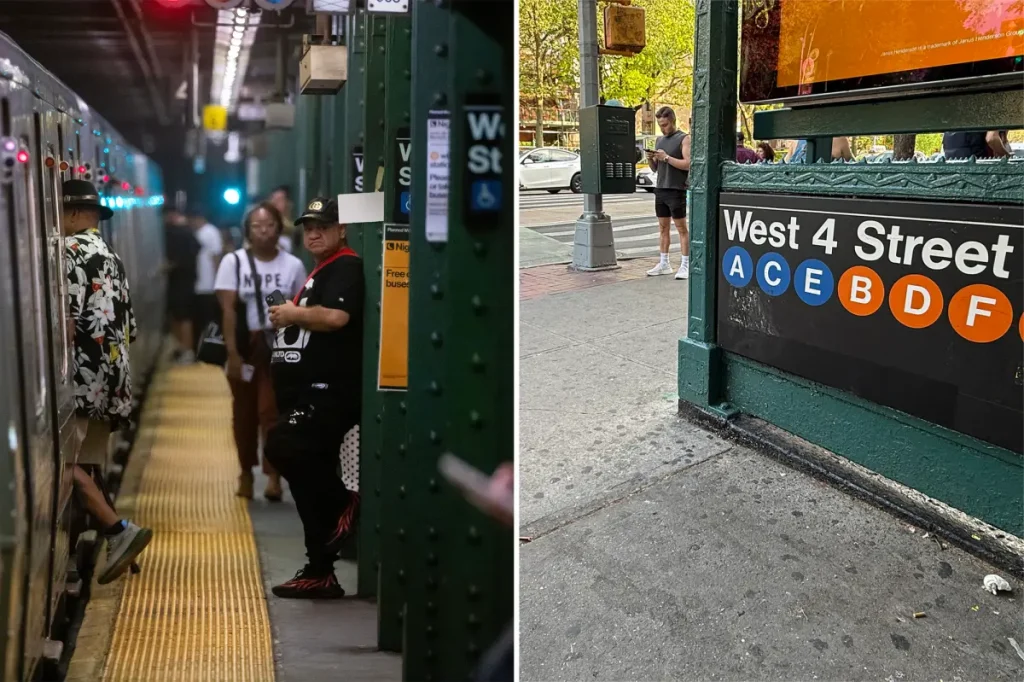Subway Incident Highlights Mental Health and Public Safety Concerns in NYC Transit System
In a troubling incident that underscores ongoing concerns about public safety and mental health in New York City’s subway system, a confrontation between two strangers escalated into violence during Thursday morning’s rush hour. A 51-year-old commuter was stabbed in the back at the West 4th Street station in Greenwich Village following a brief dispute on a Brooklyn-bound D train around 7:30 a.m. The victim, whose identity has not been released, was transported to Bellevue Hospital where medical professionals listed him in stable condition. This incident represents one of the hundreds of felony assaults that have occurred within the city’s transit system this year, highlighting the challenges facing both commuters and authorities in maintaining safety underground.
The alleged assailant, identified as 30-year-old Justice Jackson, reportedly fled the scene by boarding another train immediately after the attack. Police efforts to locate Jackson culminated in his arrest approximately 24 hours later, around 1 p.m. on Friday. Surveillance images captured Jackson wearing dark gray sweatpants, a black shirt, and black slippers at the time of the incident. Following his apprehension, authorities charged Jackson with both felony and misdemeanor assault. Interestingly, Jackson was hospitalized after his arrest, though police have not disclosed the specific reasons for his medical attention, adding another layer of complexity to an already troubling situation.
What makes this case particularly concerning is Jackson’s extensive history of encounters with law enforcement and apparent mental health challenges. According to police sources, Jackson has accumulated 11 prior arrests and is known to authorities as both a grand larceny recidivist and a repeat offender within the transit system. His most recent arrest occurred in July for three separate grand larceny cases. Perhaps most tellingly, police have responded to 10 previous incidents involving Jackson as an “emotionally disturbed person,” suggesting a pattern of behavioral health issues that may have gone inadequately addressed. This aspect of the case points to broader societal questions about how effectively the system manages individuals with recurring mental health crises who move through public spaces.
The stabbing incident reflects a slight upward trend in subway violence, with NYPD data released Sunday showing 453 felony assaults reported in the transit system so far this year compared to 445 during the same period in 2023. This represents a modest but concerning increase in violent encounters underground. The random nature of this particular attack—occurring between two individuals with no prior relationship—amplifies public anxiety about subway safety. For many New Yorkers who rely on public transportation daily, such incidents reinforce perceptions that even routine commutes carry unpredictable risks, despite the statistical rarity of such violent encounters relative to the millions of daily subway trips.
Despite the concerning nature of this incident and the slight rise in felony assaults, it’s worth noting that overall felony crime on the subway has actually decreased by approximately 4% compared to last year. The NYPD reports 1,639 total felony incidents in the transit system this year, down from 1,706 during the same timeframe in 2023. This broader reduction in crime offers a more nuanced perspective on subway safety than individual incidents might suggest. Nevertheless, the emotional impact of violent crimes like this stabbing often outweighs statistical improvements in public perception, creating challenges for city officials working to restore confidence in public transportation following pandemic-era safety concerns.
This incident ultimately serves as a microcosm of interconnected urban challenges—mental health care access, homelessness, recidivism, and public safety—that continue to affect America’s largest city. The case of Justice Jackson, described as homeless and “emotionally disturbed” with multiple previous encounters with law enforcement, raises important questions about gaps in the social safety net and the limitations of current approaches to addressing behavioral health crises. As New Yorkers continue their daily commutes, this incident will likely renew calls for both enhanced security measures and improved mental health interventions within the transit system. Finding the right balance between these approaches represents one of the significant ongoing challenges facing city leadership as they work to ensure that public transportation remains both accessible and safe for all residents.


